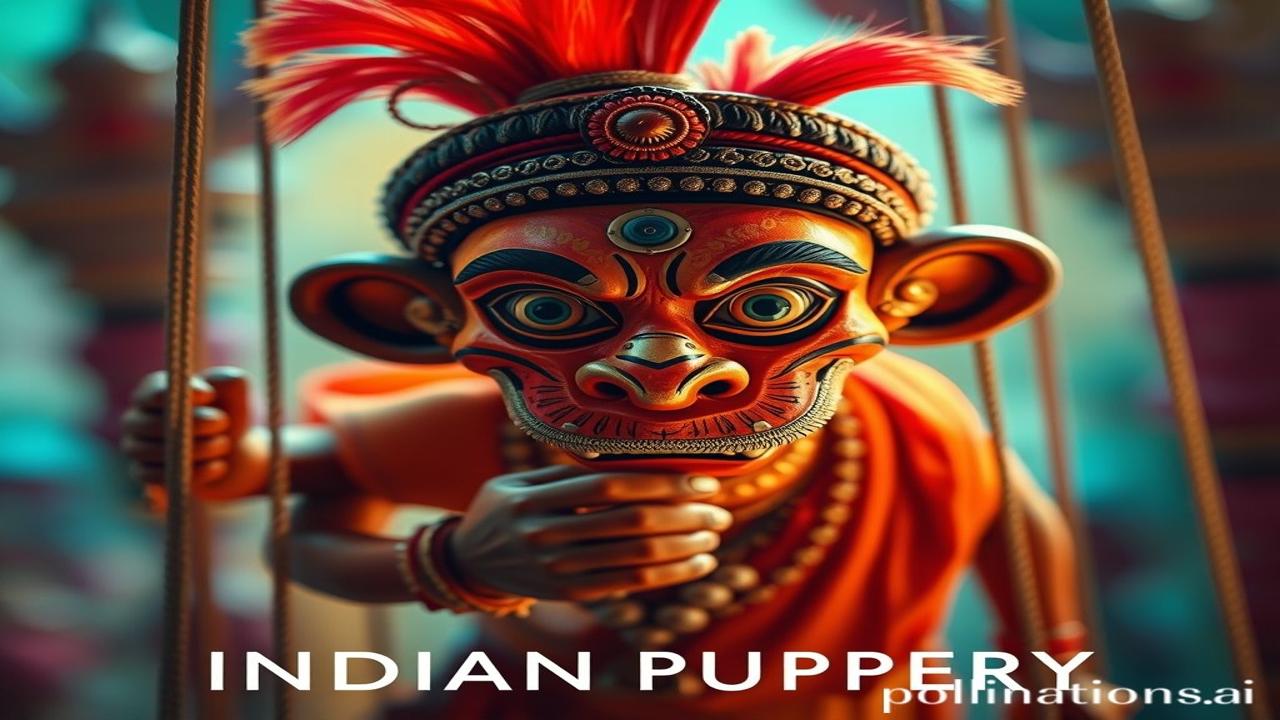Waqt Ki Panno Mein Chhupi Kathputliyon Ki Kahani: The Evolution of Indian Puppetry
Kabhi socha hai, ek chhoti si kathputli mein kitni kahaniyan samaai ho sakti hain? Imagine a dusty, dimly lit village square, centuries ago. The air is thick with the scent of incense and freshly baked bread. Dhol beats resonate in your chest, and then… the show begins. Wooden figures, brought to life by nimble fingers and ancient tales, dance and fight, love and grieve, right before your eyes. Welcome to the magical world of Indian puppetry, a world as old as time itself.
Kathputli: India Ki Rooh, Ek Drishti Mein / Puppetry: India’s Soul, At a Glance
What exactly is puppetry? It’s more than just toys dancing on strings. It’s a storytelling tradition, a vibrant art form, a living history book carved from wood, cloth, and emotion.
When did it all begin? Well, estimates point towards a mind-boggling 5000 years ago! Think Mohenjo-daro and Harappa. Archeological evidence suggests that even then, our ancestors were fascinated with articulated figurines, hinting at early forms of puppetry.
Why is it important? Puppetry is a reflection of our societal values, myths, legends, and even political commentaries. It’s a way to preserve and pass down stories that would otherwise be lost to time. It’s dharohar (heritage) in motion!
Rulers, Artisans, And Strings: A Journey Through Time
Imagine Raja Bhoj, renowned for his patronage of arts and learning, watching a Ravan Chhaya performance (shadow puppetry) under the starry sky. The flickering light dances on the screen, bringing the epic Ramayana to life.
Or picture a village artisan, painstakingly carving a kathputli (string puppet), his weathered hands knowing exactly how to breathe life into the lifeless wood. His wife sews vibrant costumes, each stitch infused with love and tradition.
“Aaj yeh Rani Laxmibai ki kathputli ban rahi hai,” he might say to his young son, explaining the nuances of her brave story. “Kal hum Raja Shivaji Maharaj banayenge. Humari shakti aur himmat ki kahaniyan humesha zinda rahegi!”
From royal courts to village squares, puppetry was a powerful medium for entertainment, education, and social commentary. Different regions developed distinct styles:
- Rajasthan’s Kathputli: String puppets, known for their vibrant costumes and energetic performances.
- Karnataka’s Togalu Gombeyatta: Shadow puppetry using leather puppets, often depicting stories from the Ramayana and Mahabharata.
- Kerala’s Pavakathakali: Glove puppets, mimicking the elaborate movements of Kathakali dancers.
- Odisha’s Ravan Chhaya: Shadow puppetry using deerskin puppets, again featuring Ramayana narratives.
Aaj Ki Kathputli: Connection to Bharatiyata / Puppetry Today: Connecting to Indianness
Even in our digital age, the echoes of this ancient art form resonate. While traditional puppetry may be facing challenges, it’s not extinct. You can still find puppeteers performing in rural areas, keeping the flame alive.
Think of the vibrant colors and storytelling techniques used in contemporary Indian animations. Aren’t they, in a way, descendants of those ancient puppetry traditions?
Puppetry also finds its place in modern theatre and education, used as a tool to engage audiences and teach complex concepts. The spirit of Bharatiyata (Indianness) – our rich cultural heritage and storytelling tradition – lives on through these modern adaptations.
Myth-Buster: It’s Not Just For Kids!
Log samajhte hain ki kathputli sirf bachchon ke liye hai. Lekin asli sach yeh hai ki yeh ek bahut hi sophisticated art form hai, jismein complex kahaniyan, social commentary, aur philosophical vicharon ko darshaya ja sakta hai. Don’t be fooled by its seemingly simple exterior. Puppetry can be profound and thought-provoking!
Sensory Overload: The Sights and Sounds of a Puppet Show
Close your eyes and imagine:
- The smell of mitti (earth) and woodsmoke hanging in the air.
- The feel of roughspun cloth against your skin.
- The rhythmic clang of cymbals and the piercing wail of the sarangi.
- The vibrant colors of the puppets, illuminated by flickering oil lamps.
- The gasps and cheers of the audience as the story unfolds.
It’s an experience that engages all your senses and transports you to another world.
Antim Vichar / Final Thoughts
Puppetry is more than just an art form; it’s a mirror reflecting our society, our beliefs, and our aspirations. Let’s ensure that this ancient tradition continues to dance, to sing, and to tell stories for generations to come.
“Yatra kala, tatra shakti” – Where there is art, there is power. May the shakti (power) of Indian puppetry continue to inspire and uplift us all.
